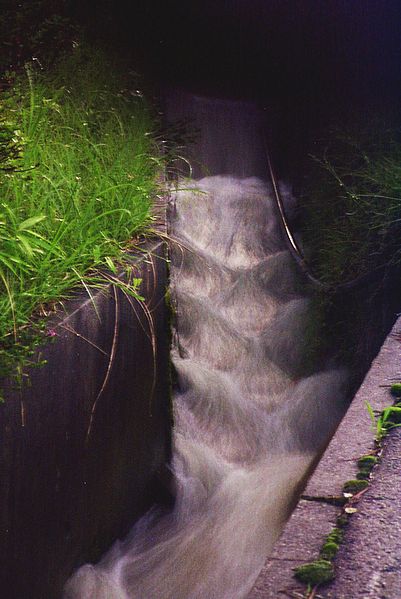Drainage is the natural or artificial removal of a surface's water and sub-surface water from an area with excess water. The internal drainage of most agricultural soils can prevent severe waterlogging, but many soils need artificial drainage to improve production or to manage water supplies.
High-density polyethylene pipe installation in a storm drain project, Mexico.
Remains of a drain at Lothal circa 3000 BC
Tank Stream, a historical drain in the City of Sydney, Australia
An agricultural drainage channel outside Magome, Japan after a heavy rain. Protuberances create turbulent water, preventing sediment from settling in the channel.
Waterlogging (agriculture)
Waterlogging water is the saturation of soil with water. Soil may be regarded as waterlogged when it is nearly saturated with water much of the time such that its air phase is restricted and anaerobic conditions prevail. In extreme cases of prolonged waterlogging, anaerobiosis occurs, the roots of mesophytes suffer, and the subsurface reducing atmosphere leads to such processes as denitrification, methanogenesis, and the reduction of iron and manganese oxides.
Crop yield (Y) and depth of water table (X in dm). At shallow depth the yield reduces.
Antique Dutch windmills used to pump water into the embanked river to prevent waterlogging of the lowlands (polders) behind them.






